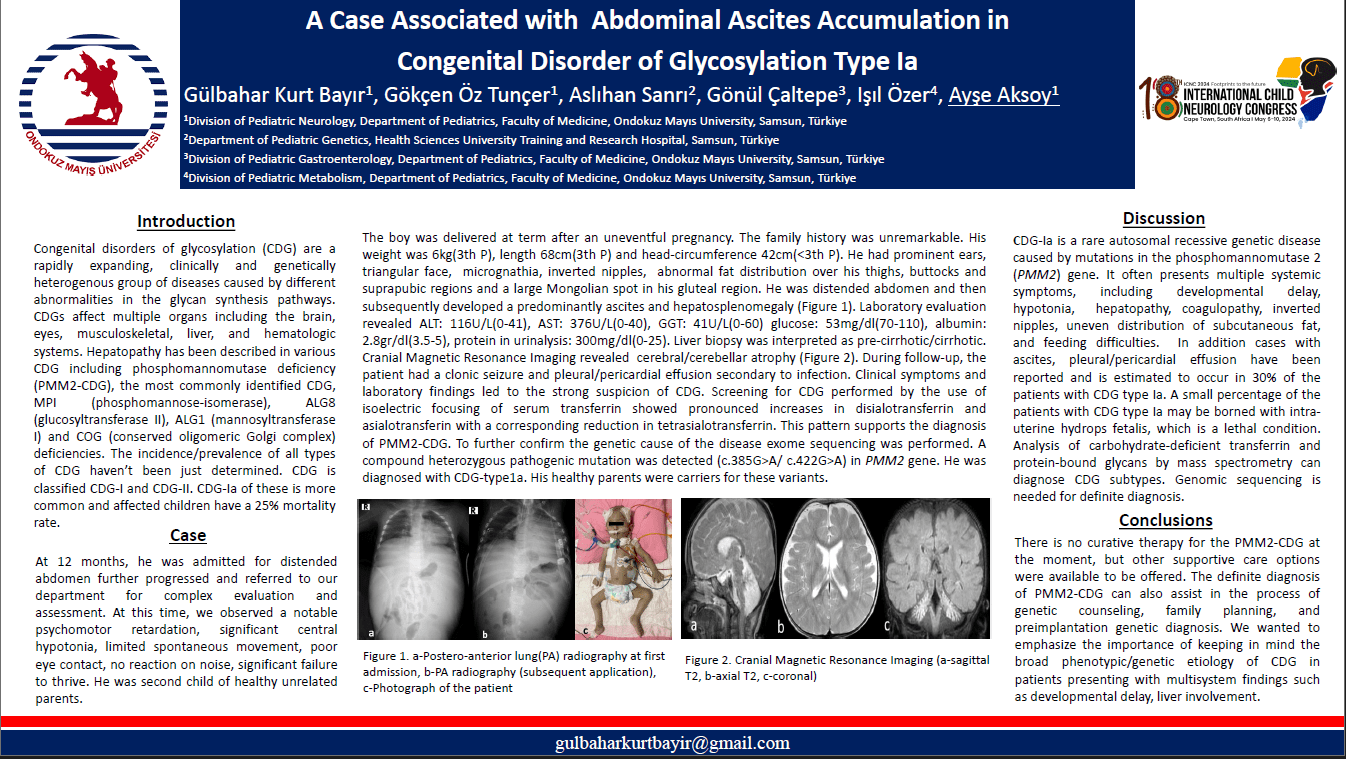A Case Associated With Abdominal Asicets Accumulation In Congenital Disorder Of Glycosylation Type Ia
Introduction: Defects in glycoprotein and glycolipid biosynthesis cause “Congenital Disorders of Glycosylation”(CDG). The incidence/prevalence of all types of CDG haven’t been just determined. Case: A 12-month-old boy was admitted due to abdominal swelling and growth-development retardation. His weight was 6kg(3P), length 68cm(3P) and head-circumference 42cm(<3P). He had prominent ears, triangular face, micrognathia and a large Mongolian spot in his gluteal region. His abdomen was distended, there were ascites and hepatosplenomegaly. Deep tendon reflexes were absent. Laboratory evaluation revealed ALT:116U/L(0-41), AST:376U/L(0-40), glucose:53mg/dl(70-110), albumin:2.8gr/dl(3.5-5), protein in urinalysis:300mg/dl(0-25). Liver biopsy was interpreted as pre-cirrhotic/cirrhotic. Cranial Magnetic Resonance Imaging was compatible with cerebral/cerebellar atrophy. The isoelectric focusing of serum transferrin disclosed a pattern of CDG-1. A compound heterozygous pathogenic mutation was detected in PMM2 gene. He was diagnosed with CDG-type1a. His healthy parents were carriers for these variants. Discussion: CDG -types presents multiple systemic symptoms, including developmental delay, hypotonia, hepatopathy, coagulopathy, ascites, pleural/pericardial effusions. We wanted to emphasize the importance of keeping in mind the broad phenotypic/genetic etiology of CDG in patients presenting with multisystem findings such as developmental delay, liver involvement.
Gülbahar KURT BAYIR
Faculty of Medicine, Ondokuz Mayıs University
Turkey
Gökcen OZ TUNCER
Faculty of Medicine, Ondokuz Mayıs University
Turkey
Aslıhan SANRI
Health Sciences University Training and Research Hospital
Turkey
Gönül CALTEPE
Faculty of Medicine, Ondokuz Mayıs University
Turkey
Ayse AKSOY
Faculty of Medicine, Ondokuz Mayıs University
Turkey
